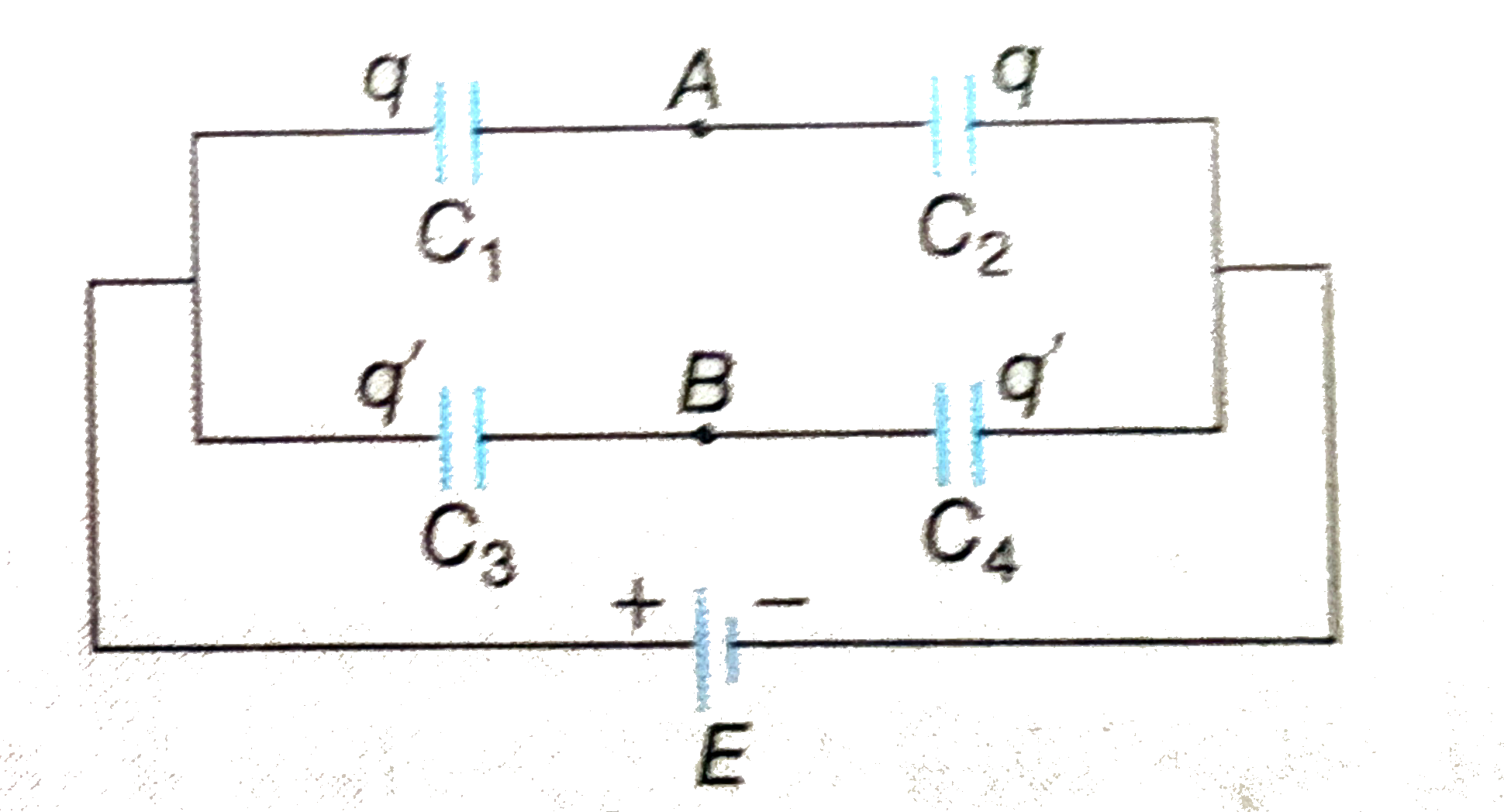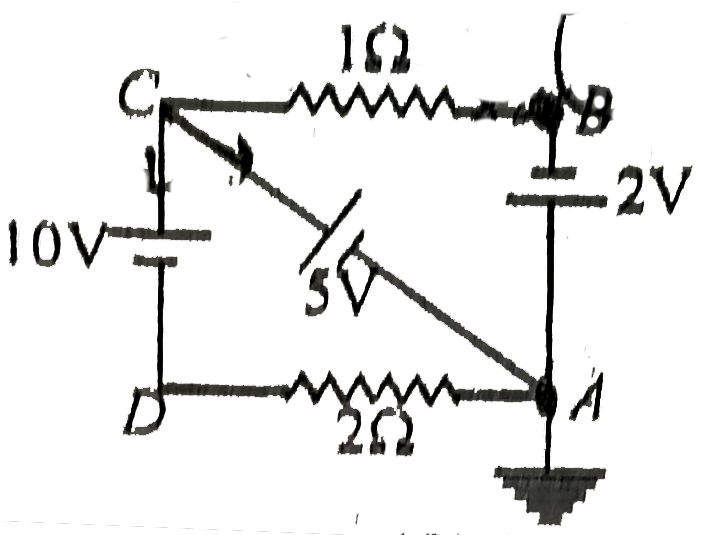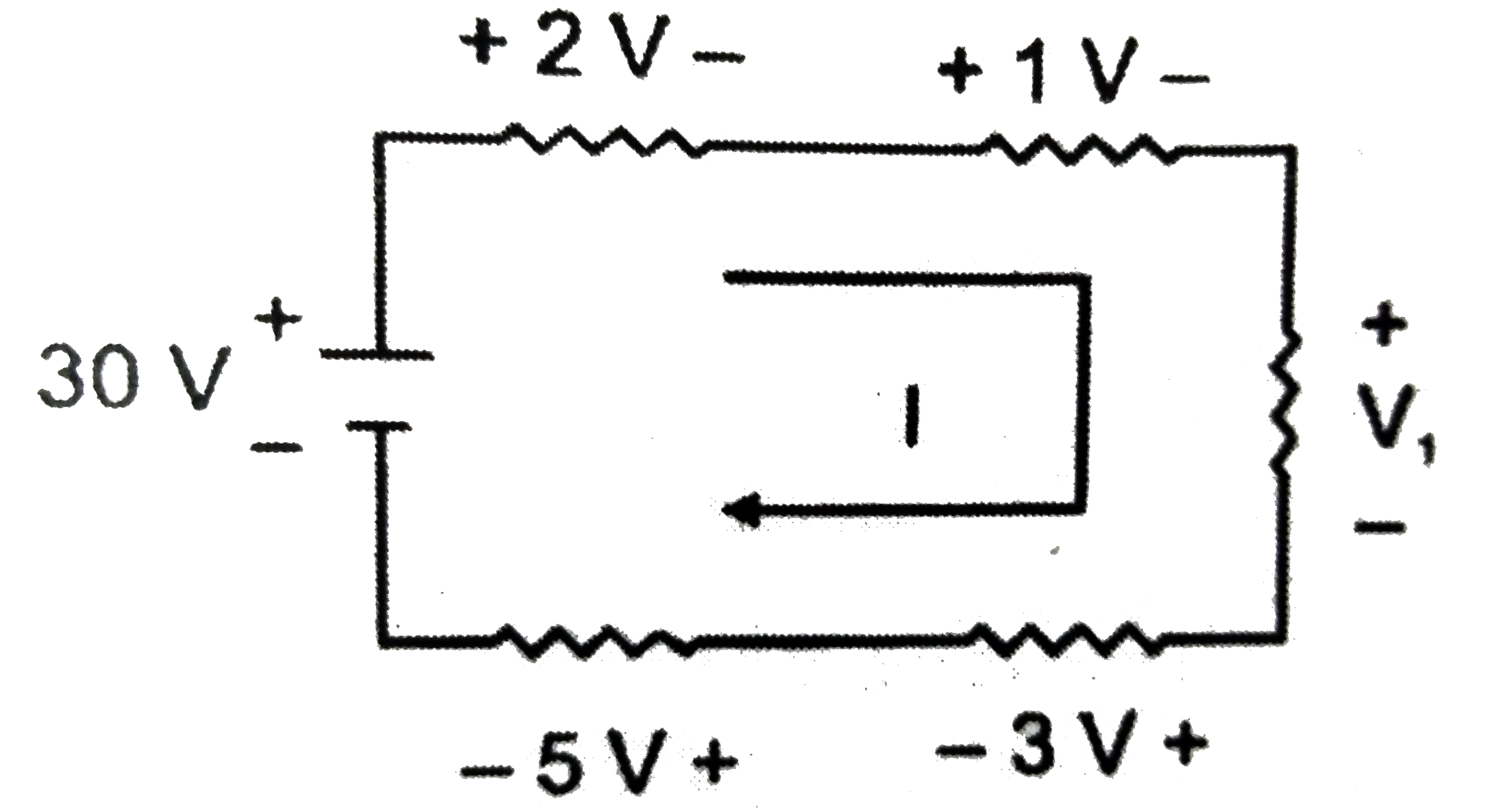In the given circuit , determine the condition for which VA−VB=0?

Text Solution
The capacitors in series have the same charge . So applying Kirchhoff's second law to the loop cotaining C1,C2 and E we get ,
qC1+qC2−E=0
or, q=E[C1C2C1+C2]
Similarly applying Kirchhoff's law to the loop containing C3,C4 and E we get ,
q'C3+q'C4−E=0
or, q=E[C3C2C3+C4]
Now , VA−VB=qC2−q'C4=E[C1C1+C2−C3C3+C4]
E[C1C4−C3C2(C1+C2)(C3+C4)]
For, VA−VB=0,C1C4−C2C3=0
or, C1C2=C3C4
|
Topper's Solved these Questions
- KIRCHHOFF'S LAWS AND ELECTRICAL MEASUREMENT Book:CHHAYA PUBLICATIONChapter:KIRCHHOFF'S LAWS AND ELECTRICAL MEASUREMENT Exercise:NCERT TEXTBOOK QUESTIONS WITH ANSWER HINT
Explore 10 Videos
- KIRCHHOFF'S LAWS AND ELECTRICAL MEASUREMENT Book:CHHAYA PUBLICATIONChapter:KIRCHHOFF'S LAWS AND ELECTRICAL MEASUREMENT Exercise:NCERT EXEMPLAR QUESTIONS WITH ANSWER HINT (MCQ -1)
Explore 2 Videos
- KIRCHHOFF'S LAWS AND ELECTRICAL MEASUREMENT Book:CHHAYA PUBLICATIONChapter:KIRCHHOFF'S LAWS AND ELECTRICAL MEASUREMENT Exercise:Section Related Questions
Explore 14 Videos
- ELEMENTARY PHENOMENA OF ELECTROSTATICS Book:CHHAYA PUBLICATIONChapter:ELEMENTARY PHENOMENA OF ELECTROSTATICS Exercise:EXAMINATION ARCHIVE
Explore 2 Videos
- LIGHT WAVE AND INTERFERENCE OF LIGHT Book:CHHAYA PUBLICATIONChapter:LIGHT WAVE AND INTERFERENCE OF LIGHT Exercise:CBSE SCANNER
Explore 15 Videos
Similar Questions
Knowledge Check
In the circuit element given here, if the potential at point B=VB=0, then the potentials of A and D are given as
 AVA=−1.5V,VD=+2VBVA=+1.5V,VD=+2VCVA=+1.5V,VD=+0.5VDVA=+1.5V,VD=−0.5V
AVA=−1.5V,VD=+2VBVA=+1.5V,VD=+2VCVA=+1.5V,VD=+0.5VDVA=+1.5V,VD=−0.5VIn the circuit shown in the figure, the ratio of VB as VC is
 A−2/5B−5/2C1D1/3
A−2/5B−5/2C1D1/3

In the given circuit the point A is 9 V higher than point B.
View Solution
In the given circuit the point A is 9 V higher than point B.
View SolutionIn the given circuit find the |VA−VB| where VA,VB are electric potentials at the points A and B.

View SolutionIn the circuit element given here, if the potential at point B=VB=0, then the potentials of A and D are given as

View SolutionIn the circuit shown in figure four capacitors are connected to a battery. Determine the potential difference VM−VN between· points M and N of the circuit. Find the conditions under which it is equal to zero.

View SolutionFor the circuit shown in figure, determine the unknown voltage drop V1.

View Solution
